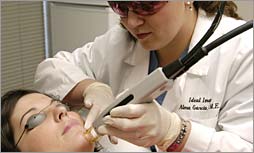Weight lose by Medifast Diet
Weight lose program by Medifast Diet? What is it? Is it safe for you? Medifast diet program will guide you to lose your weight up to 2-5 pounds a week. Oh it is great!. Here I tried to share info about medifat diet. It is a resume I took from www.medifast1.com
Medifast is a healthy diet used to help you lose weight faster and more easely than ever before. With the "5 and 1" plan, there is no calorie counting, no points of system, no diet pills and no cunfusion. It is designed to help you lose 2-5 punds per week.
Medifast diet is good choice if:
- You feel overwhelmed because you have a lot of weight to lose.
- You are stuck can't sem to lose weight on other plans.
- You hae medical problems that make it difficult to lose your weight.
How Does Medifast Work?
Medifast diet is designed to create a healthy gap between the calories you take in and the amount your body needs by an adequate level of protein while limiting the amount of carbohydrates you consume. Medifast's high protein, fortified meal replacements help you promote natural weight lose faster and safe without losing muscle.
This program has been proven in multiple clinical studies and recommended by over 15,000 physicians and used by over 1 million customer for 25 years.
Start Your Plan
The medifast recommended (5 and 1) program is good for most individuals who have a moderate amount of weight to lose.
For Indivual with 15 pounds or more to lose:
- Medifast 55: Females, "5 and 1" or complete program.
- Medifast 70: Male, "5 and1" or complete program.
- Medifast Plus for Appetite Suppression: recommended for those who struggle with hunger.
- Female who are very physically active and people who struggle with lactose intolerance might benefit from using medifat 70 instead of medifat 55.
Medifast plus for Diabetics.
- For males and Females who have diabetic problem.
- Can be used for weight management and maintenance.
Medifast Plus for Womans's Health.
Especially for females coping with changes associated with menopause.
Medifast Plus for Joint Health.
- For males and females who suffer from aches and pains joint and coronary health.
- For males and females who want to promote a healthy heart and protect against diseases.
To see all Medifast Certified Product Claims that can help you to promote your health, please visit the official site here.
Read more!












